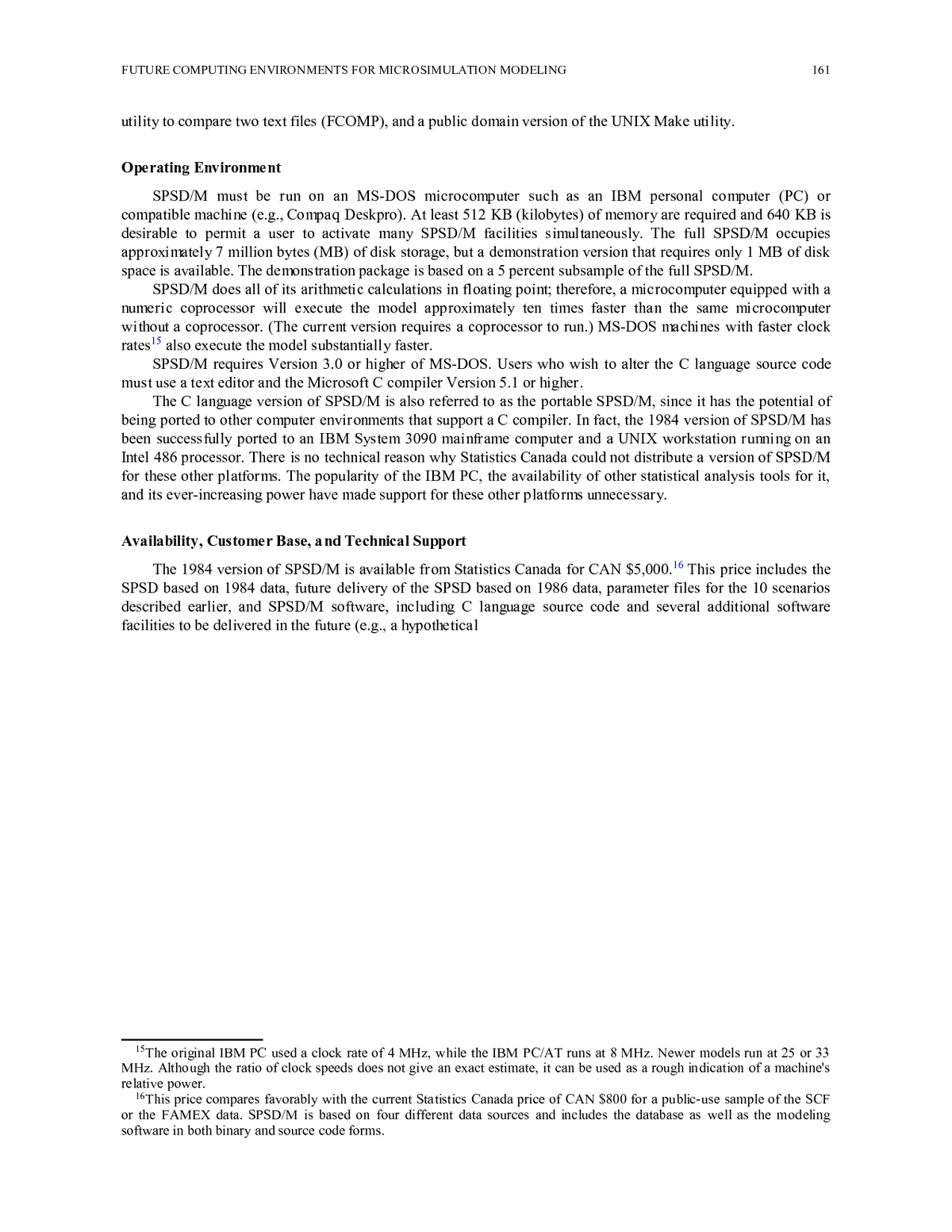
Below is the uncorrected machine-read text of this chapter, intended to provide our own search engines and external engines with highly rich, chapter-representative searchable text of each book. Because it is UNCORRECTED material, please consider the following text as a useful but insufficient proxy for the authoritative book pages.
FUTURE COMPUTING ENVIRONMENTS FOR MICROSIMULATION MODELING 161 utility to compare two text files (FCOMP), and a public domain version of the UNIX Make utility. Operating Environme nt SPSD/M must be run on an MS-DOS microcomputer such as an IBM personal computer (PC) or compatible machine (e.g., Compaq Deskpro). At least 512 KB (kilobytes) of memory are required and 640 KB is desirable to permit a user to activate many SPSD/M facilities simultaneously. The full SPSD/M occupies approximately 7 million bytes (MB) of disk storage, but a demonstration version that requires only 1 MB of disk space is available. The demonstration package is based on a 5 percent subsample of the full SPSD/M. SPSD/M does all of its arithmetic calculations in floating point; therefore, a microcomputer equipped with a numeric coprocessor will execute the model approximately ten times faster than the same microcomputer without a coprocessor. (The current version requires a coprocessor to run.) MS-DOS machines with faster clock rates15 also execute the model substantially faster. SPSD/M requires Version 3.0 or higher of MS-DOS. Users who wish to alter the C language source code must use a text editor and the Microsoft C compiler Version 5.1 or higher. The C language version of SPSD/M is also referred to as the portable SPSD/M, since it has the potential of being ported to other computer environments that support a C compiler. In fact, the 1984 version of SPSD/M has been successfully ported to an IBM System 3090 mainframe computer and a UNIX workstation running on an Intel 486 processor. There is no technical reason why Statistics Canada could not distribute a version of SPSD/M for these other platforms. The popularity of the IBM PC, the availability of other statistical analysis tools for it, and its ever-increasing power have made support for these other platforms unnecessary. Availability, Customer Base, and Technical Support The 1984 version of SPSD/M is available from Statistics Canada for CAN $5,000.16 This price includes the SPSD based on 1984 data, future delivery of the SPSD based on 1986 data, parameter files for the 10 scenarios described earlier, and SPSD/M software, including C language source code and several additional software facilities to be delivered in the future (e.g., a hypothetical 15 The original IBM PC used a clock rate of 4 MHz, while the IBM PC/AT runs at 8 MHz. Newer models run at 25 or 33 MHz. Although the ratio of clock speeds does not give an exact estimate, it can be used as a rough indication of a machine's relative power. 16 This price compares favorably with the current Statistics Canada price of CAN $800 for a public-use sample of the SCF or the FAMEX data. SPSD/M is based on four different data sources and includes the database as well as the modeling software in both binary and source code forms.
